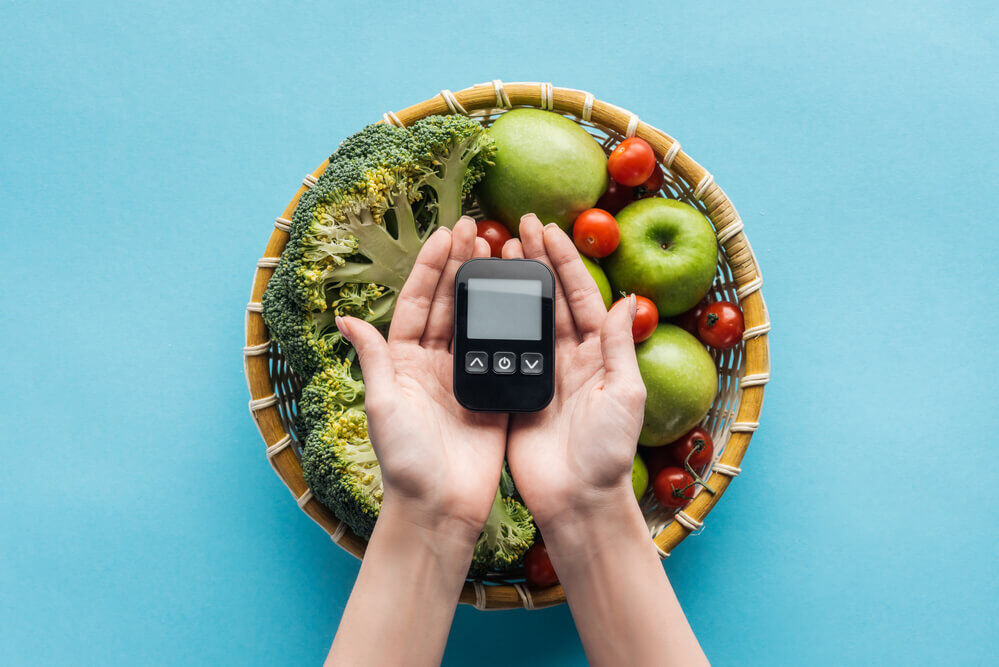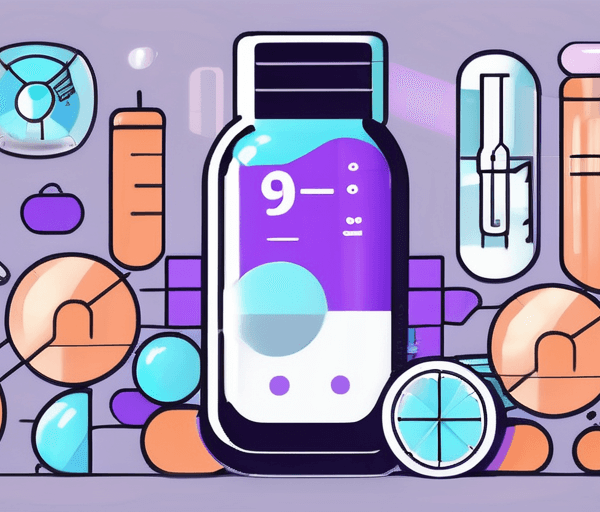You probably feel overwhelmed and confused. You’re probably asking yourself:
“What now?”
“Ano na?”
“I have Diabetes, what am I going to do?”
“Mayroon akong diabetes, anong gawin ko?”
“Can I still live a Normal Life?”
“Maaari pa ba akong mabuhay ng isang karaniwang buhay?”
Upon hearing that you have diabetes, the cloud of worry is indeed overwhelming. But there is always light to every tunnel. The great news is that you have a community to lean on.
You have the support of your specialist and the many others who have been in your shoes. You won’t walk on this journey alone. Your diagnosis is just the first step and you have plenty of guiding hands to help you.
Diabetes can be managed through diet, exercise, medical treatment, emotional support, and most importantly education. You can manage your diabetes and prevent complications by taking action and being proactive. You are still capable of living a long and healthy life.
What causes Diabetes Mellitus?
The Cause of Diabetes would vary depending on the Type of Diabetes you have.
Type 1 Diabetes, is a condition where the body is unable to produce insulin. You have Type 2 Diabetes when you have a “state of insulin resistance” or when the body doesn’t effectively use insulin.
What is Insulin?
Insulin is a hormone produced by the beta cells of your pancreas. Insulin has an important role in keeping your blood sugars within normal range. It is responsible for bringing glucose from the blood and inside the cell to have energy.
How Do You Get Diabetes?
A deficiency in amount or ineffective usage of insulin would lead to increased blood glucose or hyperglycemia. When your body fails to adapt and is unable to regulate your blood sugar, this is when you have diabetes.
Does Diabetes Have A Cure?
Up to this day, there is still no cure for diabetes. However, this chronic disease can be managed and controlled through lifestyle change (diet and exercise) and treatment.
Early diagnosis of diabetes is not only lifesaving but also aids in the prevention of diabetes-associated complications such as:
- Kidney Damage
- Nerve Damage
- Stroke
- Heart Attack
- Ulcers in the feet leading to Diabetic foot
- Loss of Vision and Cataracts
How Many People are Affected With Diabetes?
Diabetes can affect any race, gender, and age. Currently:
- 463 million people have Diabetes worldwide
- 6.3% of adults worldwide have Diabetes
How can Diabetes be screened and diagnosed?
Diabetes can be diagnosed with the help of your health care provider or diabetes specialist. The basis would be a person’s symptoms and blood test results.
The three types of blood test used to diagnose diabetes are the following:
- Fasting Blood Glucose or Fasting Blood Sugar: For this, a person should not eat or drink for at least 8 hours before the blood is extracted
- You are diabetic if your Fasting Blood sugar is >126 mg/dl
- Oral Glucose Tolerance Test: This test is composed of several steps.
- 1st A fasting blood sugar (of at least 8 hours) is taken
- 2nd An individual is going to drink a juice with 75 grams of glucose
- 3rd Another blood sample is taken 2 hours after the juice is drank
- You are diabetic if your 2-hour blood glucose is >200 mg/dl
- Hemoglobin A1c or HbA1c: This blood test shows the average blood sugar for the past three months. This type of test doesn’t need any fasting.
- You are diabetic if your HbA1C is >6.5%
It is important to seek consultation with your diabetes specialist when you have high values. They might repeat certain tests to confirm the diagnosis.
In the spotlight: Learning More About Type 2 Diabetes
In Type 2 Diabetes, the body doesn’t efficiently use insulin or there might be not enough insulin needed to maintain normal blood sugar.
When this happens, the glucose won’t be able to enter the cell, and this leads to a low energy supply. When sugar levels build up in the blood, this is called hyperglycemia
How Do I Manage My Type 2 Diabetes
Like with any type of Diabetes, this condition can be managed with medications to keep your blood sugar to near-normal levels. Medications may include oral pills or injectable insulin.
What are the risk factors for developing Type 2 Diabetes?
Listed below are the common risk factors associated with the development of Type 2 Diabetes
- Being overweight or obese
- Having a family history of diabetes
- Having an unhealthy diet
- Being physically inactive
- Increased age (45 years and older)
- Ethnicity ( Being an Asian, Alaska Native, Indian, Black, Hispanic/Latino, Native Hawaiian, or Pacific Islander)
- High blood pressure
- Impaired glucose tolerance (Having values above normal blood glucose levels but values less than the needed levels for diagnosing diabetes)
- Has a history of gestational diabetes or diabetes that developed during pregnancy
- Have low levels of “good” cholesterol or HDL
- Have high levels of “bad” cholesterol or LDL
- Have a waist circumference of more than 102 cm in males or 90 cm in females
To determine the classification of your weight, the Body Mass Index (BMI) Chart can classify whether if you are overweight or obese. This is computed with your body weight and height.
BMI is calculated as:
BMI = weight (kg) ÷ height2 (m)
| Body Mass Index Chart | ||
| Classification | WHO general population | WHO Asian Classification |
| Underweight | < 18.5 kg/m2 | < 18.5 kg/m2 |
| Normal | 18.5-24.9 kg/m2 | 18.5-23 kg/m2 |
| Overweight | 25.0-29.9 kg/m2 | 23.0-27.5 kg/m2 |
| Obese | > 30 kg/m2 | > 27 kg/m2 |
It is important to note that as Filipinos, we fall into the Asian classifications and our values are lower compared to the general population.
How do I know my risk for developing Diabetes?
In 2001, The Finnish Type 2 Diabetes Risk Assessment Form was developed. This is a brief questionnaire that can help you identify if you are at a higher risk for developing Type 2 Diabetes in the next 10 years.
This test only takes a couple of minutes and can be completed online.
In The Spotlight: Learning More About Type 1 Diabetes
The reason why one develops Type 1 Diabetes is that the pancreas does not make any insulin at all. Unlike with Type 2 Diabetes, people living with Type 1 Diabetes needs regular sugar monitoring and multiple daily insulin injections to survive.
It is good to know that you are not alone and millions of people can still live healthy lives despite having this condition.
Managing your blood sugar is made possible with good compliance with insulin injections, proper diet, and regular exercise. This is made easier with the guidance and support of your diabetes team.
Curiosity might get the best of you and you might often wonder what an insulin pump is? This is one way to continuously deliver insulin to your body. One perfect example of a person who uses an insulin pump is no other than Mr. Pure Energy, Gary Valenciano.
Whenever you feel uneasy about your disease, it is very important to reach out to others and share your feelings. There should be no shame in asking for help. One way to help you live a healthy life even with Type 1 Diabetes is by reaching out.
What are the risk factors for developing Type 1 Diabetes?
The following are risk factors for developing type 1 Diabetes:
- Family history
- Genetic
- Geography
- Age
HbA1C, How much a useful tool is this?
The AH1C test is such a versatile test that can identify prediabetes as well as diagnose diabetes. Aside from being a diagnostic tool, it can monitor how effective and how compliant you are with your diabetes treatment.
Your HA1C results will determine how your diabetes care team will move forward with the management of your diabetes.
This is a simple and convenient test and doesn’t need fasting. This test can give you a clear picture of your average blood sugar for the past 3 months.
The frequency of HbA1c monitoring will depend on your diabetes specialist. Typically it is taken at least twice a year if you are close to meeting your treatment goals.
What happens if my HbA1c results are on the higher side?
The higher your results, the greater the risk is for you to develop diabetes-related complications.
If your results are on the higher side, there is a greater probability that your HbA1c levels will be taken more than twice a year.
This means you are not meeting your treatment goals and your medications may be changed by your doctor.
How do I interpret my HbA1C values?
With numbers, most especially HbA1c values, there is no one-size-fits all. Target values would depend on a person’s age, activity, duration of the disease, and many other factors.
Remember your target may be different from others.
As a general rule, the goal for most adults with diabetes is to have an HbA1C level that is less than 7.
Your results are reported in percentage. The rule of thumb will be, the higher the percentage, the higher is your average blood sugar for the past 3 months.
HbA1C as a diagnostic tool, what do the numbers mean?

Based on the latest guidelines and recommendations:
- An HbA1c between 5.7 and less than 6.5% means you are Prediabetic
- An HbA1C level of 6.5% or higher means you are Diabetic
References:
- American Diabetes Association, accessed 11 April 2021, https://www.diabetes.org/diabetes/newly-diagnosed
- International Diabetes Association, accessed 11 April 2021, https://idf.org/aboutdiabetes/type-2-diabetes.html
- American Association of Clinical Endocrinologist, accessed 11 April 2021, https://www.aace.com/disease-and-conditions/diabetes/what-you-need-know-about-diabetes
- American Diabetes Association, accessed 11 April 2021, https://www.diabetes.org/a1c
- American Diabetes Association, accessed 11 April 2021, https://www.aace.com/disease-and-conditions/diabetes/type-2-diabetes
- American Diabetes Association, accessed 11 April 2021, https://www.aace.com/disease-and-conditions/diabetes/type-1-diabetes



